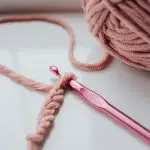Are you tired of fabric fastenings that feel like a tug-of-war? Two-sided Velcro straps may be the ultimate solution you've been seeking. With its innovative design, this fastening system offers a double-sided approach to securing fabrics, providing a strong grip and versatile application.
This comprehensive analysis explores the evolution of Velcro, the limitations of traditional Velcro, and the advantages of two-sided Velcro. Discover its applications in everyday life and various industries, as well as its durability and longevity. Additionally, explore the environmental impact and sustainability of this fabric fastening solution.
Get ready to elevate your mastery of fabric fastening with the potential of two-sided Velcro straps.
Key Takeaways
- Traditional Velcro has limitations in terms of stability, weight-bearing capacity, compatibility with certain fabrics, and susceptibility to wear and tear.
- Two-sided Velcro straps offer advantages such as customizable designs, enhanced security, reusability and durability, suitability for different materials, versatility in various applications, and faster closure compared to traditional fastening methods.
- Two-sided Velcro straps have a wide range of applications including household organization, fashion, sports equipment, medical devices, and industrial uses in aerospace, medical, automotive, and manufacturing industries.
- Two-sided Velcro straps provide long-term performance and resilience against wear and tear, maintaining gripping strength over an extended period, while also considering environmental impact and sustainability in manufacturing and disposal processes.
The Evolution of Velcro
The evolution of Velcro began in the 1940s when Swiss engineer George de Mestral first conceived the idea. His innovation stemmed from the simple yet effective design of burdock burrs sticking to his clothing and his dog's fur during a walk in the woods. Intrigued by this natural fastening mechanism, de Mestral delved into understanding its underlying materials and structure. This led to the development of the synthetic hook-and-loop fastening system we now know as Velcro.
De Mestral's design involved two components: hooks and loops. The hooks, made from nylon or polyester, were meticulously engineered to latch onto the loops, which were typically made from nylon or other synthetic materials. This groundbreaking combination allowed for repeated attachment and detachment, making Velcro a versatile and reliable fastening solution. Over the years, continuous innovation has led to the improvement of materials, resulting in Velcro with enhanced durability and strength.
The evolution of Velcro showcases a remarkable journey of turning a natural occurrence into a practical and widely used fastening solution through innovative design and the careful selection of materials.
Limitations of Traditional Velcro
Traditional Velcro has some limitations that make it less effective in certain situations.
One-sided attachment can lead to issues with stability and security, especially when fastening heavier items.
Additionally, traditional Velcro's weight-bearing capacity is limited, and its susceptibility to wear can reduce its effectiveness over time.
One-Sided Attachment Issues
Experiencing one-sided attachment issues with traditional Velcro can be frustrating when trying to secure fabrics. The limitations of traditional Velcro become evident when the adhesive side fails to provide the necessary grip, leading to instability and potential detachment.
Here are the specific issues you may encounter with one-sided attachment:
- Limited Adhesion: Traditional Velcro's one-sided attachment often results in limited adhesion to certain fabrics, especially those with delicate or uneven surfaces.
- Unstable Fastening: The lack of improved adhesion on one side can lead to unstable and unreliable fastening, causing fabrics to come loose easily.
- Compatibility Challenges: Traditional Velcro's one-sided attachment may not be compatible with all types of fabrics, restricting its versatility.
- Reduced Durability: The reliance on one-sided attachment can lead to premature wear and tear, reducing the overall durability of the fastening solution.
Limited Weight-Bearing Capacity
Struggling with traditional Velcro's limited weight-bearing capacity can hinder your fabric fastening needs, leading to potential instability and detachment.
The weight distribution and load capacity of one-sided Velcro can pose significant challenges, especially when securing heavier items.
The structural integrity of traditional Velcro may not be sufficient to support substantial loads, raising safety concerns in various applications.
This limitation becomes particularly problematic in industrial, medical, and outdoor settings where the need for secure and reliable fastening is paramount.
The potential for detachment due to inadequate weight-bearing capacity can result in equipment damage, product loss, or even personal injury.
As such, understanding the limitations of traditional Velcro is crucial in evaluating the effectiveness of fabric fastening solutions, particularly in scenarios requiring high load-bearing capabilities.
Susceptibility to Wear
When relying on traditional Velcro, you may find that it wears out over time, diminishing its fastening effectiveness. The susceptibility to wear is a significant limitation of traditional Velcro, leading to decreased wear resistance and fastening reliability. Consider the following points to understand this drawback:
- Frictional Wear: Continuous use can lead to frictional wear, causing the hooks and loops to lose their grip over time.
- Environmental Factors: Exposure to dirt, moisture, and UV radiation can accelerate the deterioration of traditional Velcro, reducing its lifespan.
- Maintenance Requirements: Regular cleaning and maintenance are necessary to prolong the life of traditional Velcro, adding to the overall upkeep.
- Repetitive Engagements: Repeated opening and closing weaken the hooks and loops, leading to reduced fastening strength over time.
Understanding the susceptibility to wear and maintenance requirements is crucial when evaluating traditional Velcro's limitations.
Advantages of Two-Sided Velcro
Two-sided Velcro offers versatile fastening options, allowing you to securely attach items in various ways.
Its strong and durable hold ensures that your fabric fastening needs are met with reliability and long-lasting performance.
Additionally, the time-saving application process of two-sided Velcro makes it a practical and efficient choice for a wide range of applications.
Versatile Fastening Options
With two-sided Velcro straps, you can easily fasten and unfasten fabric in seconds, making it a versatile option for various applications. Here are some advantages of using two-sided Velcro:
- Customizable designs: Two-sided Velcro comes in various shapes, sizes, and colors, allowing you to customize the fastening solution to suit your specific needs.
- Enhanced security: The combination of hooks and loops provides a strong grip, ensuring that your fabric stays securely fastened without any risk of slipping or coming loose.
- Reusable and durable: Two-sided Velcro can be reused multiple times without losing its grip, making it a cost-effective and long-lasting fastening solution.
- Suitable for different materials: Whether you need to fasten fabric, plastic, or even metal, two-sided Velcro offers a versatile solution that can be used across a wide range of materials.
Strong and Durable Hold
To ensure a strong and durable hold for your fabric, two-sided Velcro straps provide a reliable fastening solution that offers enhanced security and versatility. The two-sided Velcro system consists of hook and loop strips that interlock, creating a secure fastening that can withstand tension and stress. The hooks and loops engage firmly, preventing slippage and ensuring a strong hold even in dynamic environments. This secure fastening is essential for applications where stability is paramount. Whether it's for heavy-duty industrial use or outdoor gear, the two-sided Velcro straps offer a dependable hold that keeps items in place. The table below illustrates the strength and durability of two-sided Velcro compared to other fastening methods, highlighting its superiority in providing a secure hold.
| Fastening Method | Strength | Durability |
|---|---|---|
| Two-Sided Velcro | High | Long-lasting |
| Zippers | Moderate | Moderate |
| Buttons | Low | Varies |
| Snaps | Moderate | Moderate |
Time-Saving Application Process
You'll appreciate the time-saving application process of two-sided Velcro straps, as they offer a quick and convenient way to secure your fabric without the need for complex or time-consuming techniques.
Here are four reasons why the efficient fastening of two-sided Velcro is advantageous:
- Faster Closure: With two-sided Velcro, you can achieve a secure closure in a fraction of the time it would take with traditional fastening methods.
- Convenient Application: The simple and intuitive nature of two-sided Velcro allows for swift and hassle-free application, saving you valuable time and effort.
- No Special Tools Required: Unlike some other fabric fastening methods, two-sided Velcro straps can be applied without the need for specialized tools, making the process even more time-efficient.
- Reusability: The ability to quickly attach and detach two-sided Velcro means that fabric can be secured and unsecured rapidly, adding to the time-saving benefits of this fastening solution.
Applications in Everyday Life
In everyday life, a two-sided Velcro strap offers a versatile and convenient fabric fastening solution. Household organization becomes efficient with Velcro straps, allowing you to neatly bundle cables, secure curtains, and organize tools.
In fashion, these straps provide a quick and adjustable closure for clothing, shoes, and accessories. Moreover, sports equipment benefits from the use of Velcro straps by providing a secure and adjustable fastening solution for items such as knee pads, elbow pads, and even securing items to a backpack.
In the medical field, Velcro straps are widely used to secure braces, splints, and medical devices in a manner that's both secure and easily adjustable.
The versatility and strength of two-sided Velcro straps make them a valuable asset in everyday life, offering a reliable fastening solution across a wide range of applications. Whether it's for household organization, fashion, sports equipment, or medical devices, the convenience and adaptability of Velcro straps make them an indispensable solution for fabric fastening needs.
Two-Sided Velcro in Industries
The versatility and strength of two-sided Velcro straps make them invaluable in industries, providing a reliable and adaptable fabric fastening solution across a wide range of applications.
Industrial applications benefit from the use of two-sided Velcro due to its durability and ease of use. Here are four significant ways two-sided Velcro is utilized in various industries:
- Aerospace: Two-sided Velcro is used in securing wires, cables, and insulation in aircraft, providing a strong yet adjustable fastening solution that can withstand high levels of vibration and extreme temperatures.
- Medical: In the medical field, two-sided Velcro is used in orthopedic braces, prosthetics, and medical devices, providing a secure and adjustable fastening solution that's gentle on the skin and easy to clean.
- Automotive: Two-sided Velcro is used in automotive interiors for securing carpeting, headliners, and upholstery, providing a durable and easy-to-install fastening solution that can withstand the rigors of vehicle use.
- Manufacturing: In manufacturing, two-sided Velcro is used for cable management, securing protective gear, and attaching components, providing a versatile and reusable fastening solution that streamlines production processes.
Durability and Longevity
When considering durability and longevity, it's important to recognize that two-sided Velcro straps are designed to withstand repeated use in demanding environments. The rugged construction and long-term performance of these straps make them an ideal choice for various applications. The following table illustrates the key elements contributing to the durability and longevity of two-sided Velcro straps:
| Durability and Longevity Features | Description |
|---|---|
| Rugged Construction | Two-sided Velcro straps are made from high-quality materials, ensuring resilience against wear and tear. They are designed to withstand frequent opening and closing without losing effectiveness. |
| Long-Term Performance | These straps maintain their gripping strength over an extended period, making them suitable for long-term use. The hook and loop design ensures consistent fastening, even after multiple cycles of use. |
| Resistance to Environmental Factors | Two-sided Velcro straps are resistant to moisture, UV exposure, and extreme temperatures, further enhancing their durability in various conditions. |
The combination of rugged construction and long-term performance makes two-sided Velcro straps a reliable and enduring fabric fastening solution, particularly in industries where durability is paramount.
Environmental Impact and Sustainability
Considering the environmental impact and sustainability of two-sided Velcro straps, you can assess their overall carbon footprint and recyclability.
- Sustainable Manufacturing: Two-sided Velcro straps can be produced using sustainable manufacturing processes, reducing the environmental impact of their production.
- Eco-Friendly Materials: Many Velcro straps are made from eco-friendly materials such as recycled plastics or organic fibers, contributing to a more sustainable product lifecycle.
- End of Life Disposal: When considering the environmental impact, it's important to evaluate the end of life disposal options for Velcro straps. Proper disposal methods and recycling options can significantly reduce their environmental footprint.
- Recycling Options: Some manufacturers offer recycling programs for their Velcro straps, allowing them to be repurposed into new products or materials, further enhancing their sustainability.
Frequently Asked Questions
How Does the Cost of Two-Sided Velcro Compare to Traditional Velcro?
When comparing the cost of two-sided Velcro to traditional Velcro, consider efficiency and durability. Two-sided Velcro may offer higher initial cost, but its durability and efficiency in fastening make it a cost-effective long-term solution.
Are There Any Potential Health Concerns Associated With Using Two-Sided Velcro?
When using two-sided velcro, it's important to consider potential allergies and safety concerns, as some individuals may experience skin irritation or sensitivities. It's always advisable to test a small area first.
Can Two-Sided Velcro Be Easily Customized for Specific Applications?
You can easily customize two-sided Velcro for specific industrial applications. With options like different adhesive strengths, colors, and sizes, it offers versatility for tailored solutions. Its adaptability makes it a popular choice across various industries.
What Advancements in Technology Have Contributed to the Development of Two-Sided Velcro?
Advancements in technology, like innovative materials and manufacturing techniques, have led to the development of two-sided Velcro. This has enabled customization for specific applications in various industries, contributing to widespread adoption of this fastening solution.
Are There Any Specific Industries That Have Not yet Adopted the Use of Two-Sided Velcro, and Why?
Industries vary in adoption rates of two-sided Velcro. Potential for improved fastening and hazards reduction make it ideal for medical, aerospace, and sports equipment. However, some industries lag due to cost and durability concerns.
- How Does Ring Spun Cotton Affect Garment Fit and Shape Retention? - August 13, 2024
- What Are the Challenges in Producing Ring Spun Cotton? - August 13, 2024
- Is Ring Spun Cotton Suitable for Plus-Size Clothing? - August 13, 2024







